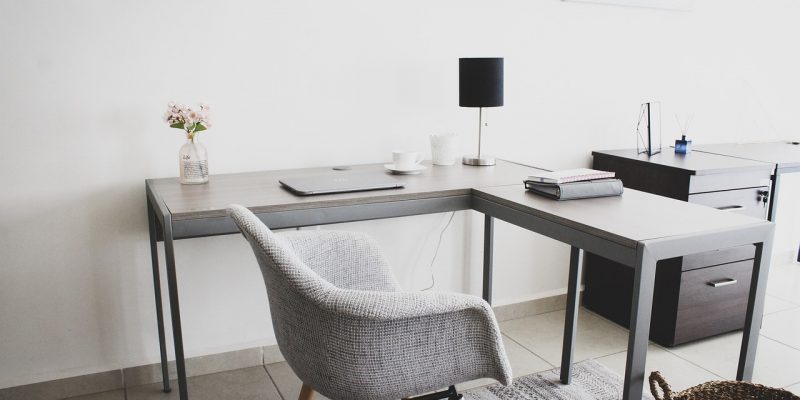The concept of working from home has become a defining feature of the modern professional landscape. Whether you’re a freelancer, an entrepreneur, or an employee in a remote work arrangement, a well-designed home office is crucial for productivity, focus, and overall well-being. Below are some design and organization tips to help you create a home office that caters to your unique needs and boosts your efficiency.
Understand Your Work Style
The first step in designing an effective home office is understanding your work style. Some people thrive in a minimalistic, clutter-free environment, while others need a bit of organized chaos to spark creativity. Consider these aspects:
Work Environment: Think about the type of atmosphere that makes you most productive. Are you more comfortable in a serene, quiet space, or do you prefer a bustling, energetic environment? Whatever the case, you will need to have the basics of somewhere to work and fiber internet to provide a fast and secure connection.
Storage Preferences: Determine your storage needs. Do you require extensive shelving and filing cabinets for paperwork, or can you work with a digital-first approach?
Ergonomics: Prioritize ergonomic considerations. Invest in a comfortable chair and a well-positioned desk to minimize strain and discomfort during long working hours.
Location Matters
Choose the right location for your home office. Here are some factors to consider:
Natural Light: Whenever possible, position your workspace near a window to take advantage of natural light. It not only reduces eye strain but also improves your mood and energy levels.
Separation: Ideally, your home office should be separate from your living spaces to create a clear boundary between work and personal life. However, this isn’t always feasible, so ensure that the area you choose can be designated as your workspace.
Noise Levels: Consider the noise levels in your chosen location. If you need a quiet environment, find a space away from household commotion or invest in noise-canceling solutions.
Organization is Key
Effective organization is vital for maintaining a productive home office. Try these strategies:
Declutter Regularly: Clear out unnecessary items and clutter. A clean workspace can lead to a clearer mind and better focus.
Use Storage Solutions: Invest in functional storage solutions. This could include shelves, cabinets, drawer organizers, or digital file management systems.
Label and Categorize: Keep things organized by labeling and categorizing items. This will make it easier to find what you need. Introduce a color-coding system to categorize further and distinguish different types of items. For example, use colored folders, labels, or storage containers for specific projects, document types, or priorities.
Prioritize Accessibility: Arrange your office so that frequently used items are easily accessible. This reduces the time spent searching for materials.
Personalize Your Space
Your home office should be a reflection of your personality and work preferences. But personalization must be eco-friendly, too, which contributes to a healthier and more sustainable workspace. You can personalize your space while being environmentally friendly by seeking an expert’s help, such as one from Tropical Plant Rentals. Here’s how to personalize it:
Inspirational Decor: Decorate your office with items that inspire you, whether it’s artwork, motivational quotes, or personal mementos. Display a curated book collection that inspires you or relates to your profession. Create a bulletin or vision board to pin goals, achievements, and visual representations of your aspirations.
Plants: Incorporate some indoor plants to add a touch of nature. Plants can improve air quality and create a more inviting atmosphere. The snake plant, known for its air-purifying qualities, is low-maintenance and thrives in low light conditions. Spider plants are resilient and excellent at removing common pollutants, adapting easily to various lighting situations.
Color Scheme: Choose a color scheme that resonates with you. Different colors can evoke different emotions, so select a palette that encourages productivity and comfort. Gray conveys sophistication and professionalism. It provides a versatile backdrop for other colors and promotes balance. Warm earth tones, like terracotta, can create a cozy and inviting atmosphere
Ergonomics: Invest in ergonomic furniture that not only supports your physical well-being but also aligns with your aesthetic preferences. Invest in a high-quality ergonomic chair with adjustable features like lumbar support, armrests, and seat height. A sit-stand desk lets you shift between sitting and standing positions, promoting movement and reducing the risk of sedentary-related issues.
Lighting: Select appropriate lighting that suits your work tasks. Consider a mix of ambient, task, and accent lighting for versatility. Place adjustable floor or table lamps with directed light on your workspace to reduce eye strain. LED task lights with color temperature adjustment can simulate natural daylight for optimal productivity.
In conclusion, creating a home office that caters to your unique preferences and work style is essential for success in a remote work environment. By understanding your needs, selecting the right location, staying organized, and personalizing your space, you can design a home office that boosts your productivity and enhances your overall work experience. Remember that your home office is a dynamic space, and periodic adjustments will ensure that it continues to work for you.




















